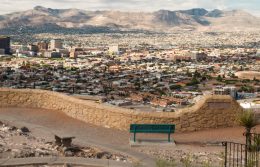City Spotlight: Rising Star
About 70 miles north of the spot that marks the geographical center of Texas lies a little town on crossroads that is so small you might not notice it as you drive through.
But Rising Star, despite being home to about 750 people, has a history and culture that befits its ambitious name.
The area traces its history back to 1876, when six families moved west from Gregg County and settled near Copperas Creek. A post office followed in 1878, and in 1879, town father Tom Anderson purchased some land from one of the original six families, founded a general store, and reopened the post office on it.
And while you might believe that the town’s name was inspired by those big and bright stars deep in the heart, the name derives from the observation that crops thrived here, though surrounded by barren land. The area was dubbed “rising star country.”
Boom Town Goes Bust
For the first few decades of its existence, Rising Star rose fast. By 1889, the fledgling town was home to five businesses and three doctors. A few years later, a bank, hotel, school, five churches, two newspapers, and other stores followed.
Agriculture drove growth, initially, with the surrounding land producing corn, cotton, oats, and fruit. In 1911, the Missouri-Kansas-Texas Railroad expanded through the area a few years after oil was discovered nearby. Rising Star’s oil boom was on.
The rush of new oil field workers and prospectors into Rising Star stressed the town infrastructure. Lacking sufficient housing, local officials feared Rising Star might turn into a shanty town, with workers erecting tents and makeshift housing on open land.
Town officials enacted new building regulations, and workers responded by building a new town 5 miles west. By 1920, however, the Eastland County oil boom was nearly over, and the rival town vanished almost as quickly as it was built. Although oil continued to be produced around Rising Star through the 1960s, the town settled back into its sleepy agricultural rhythm, with pecans and peanuts becoming the main crops.
Deep in the Heart of Texas
Thanks to its rapid growth, Rising Star is home to an architectural heritage that punches well above its weight.
Driving through the town, one of the first buildings you notice is a large stone structure with the words “Rising Star City Market” etched into the stone above its entrance. Although today the building’s grandeur stands in stark contrast to the town’s otherwise modest buildings, this space was built by the Works Progress Administration at the tail end of the New Deal in 1941. For decades, it served as the location of regional farmers markets as well as a venue for the town’s fall fair. Today, it is used for community gatherings and events.
Today, Rising Star is a great location to explore the heart of Texas. Visitors to the area also enjoy fishing for bass, catfish, and crappie on nearby Lake Leon.
Many of Texas’ towns can attribute oil to their origin stories. Visit Luling, where the city’s shining star is watermelon.
© 2023 Texas Farm Bureau Insurance



